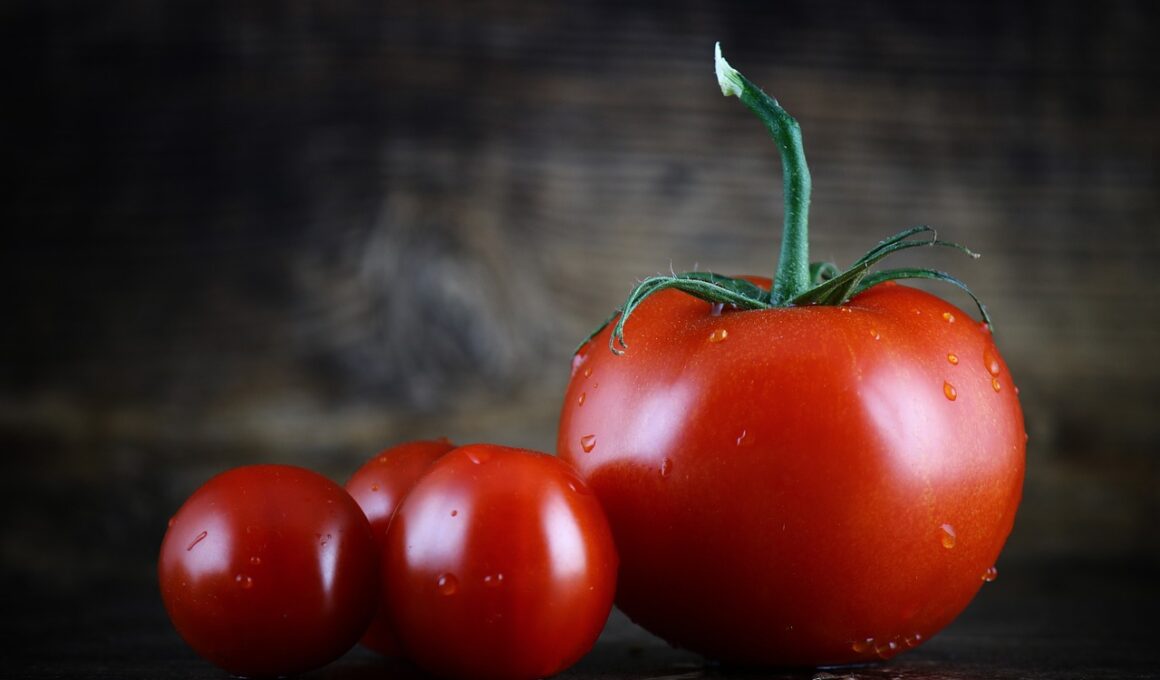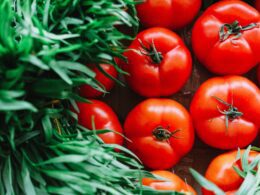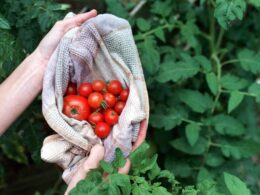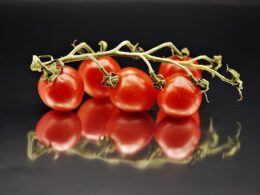Growing your own tomato plants in 5-gallon buckets is a fantastic way to enjoy fresh, delicious tomatoes without needing a large garden or extensive gardening experience. However, ensuring that your tomato plants receive the proper nutrients is crucial for their growth and health.
If you’re new to container gardening or just want to make sure you’re doing everything right, knowing how often to fertilize your tomato plants can give you the confidence and peace of mind that you’re providing them with the best care possible.
In this article, we’ll help guide you through understanding the nutrient needs of tomato plants, choosing the right fertilizer, determining the proper fertilization frequency, and mastering fertilization techniques specifically for 5-gallon buckets. By following these guidelines and closely monitoring your plant’s health, you’ll be well on your way to enjoying a bountiful harvest of juicy homegrown tomatoes – all while feeling secure in knowing that you’ve taken every necessary step to ensure their success.
Understanding Tomato Plant Nutrient Needs
It’s crucial to grasp the nutrient requirements of tomato plants grown in 5-gallon containers, as supplying them with the right amount and frequency of fertilization will ensure healthy growth and abundant harvest.
Tomato plants require a balanced blend of essential nutrients, including nitrogen for leafy growth, phosphorus for root development and fruiting, and potassium for overall plant health. Additionally, they need trace minerals such as calcium, magnesium, and sulfur to thrive.
When growing tomatoes in 5-gallon buckets, it’s important to monitor their nutrient levels closely since container gardening can limit access to essential elements found naturally in garden soil. Pay attention to your plants’ appearance – yellowing leaves or slow growth may indicate a lack of nutrients.
To keep your tomato plants safe from deficiencies or imbalances that could harm their productivity and quality, consider using a water-soluble fertilizer designed specifically for vegetables.
To address your specific question about how often you should fertilize tomato plants in 5-gallon buckets: a good rule of thumb is every two weeks during the growing season. Start by fertilizing when you transplant seedlings into the buckets and continue until you see the first signs of fruit set. Once fruits start developing on your tomato plants, switch to a low-nitrogen fertilizer formula so that energy is directed towards producing delicious tomatoes rather than excessive foliage.
This careful approach will provide your container-grown tomatoes with precisely what they need to flourish while ensuring their safety throughout the process.
Choosing the Right Fertilizer
Picking the perfect fertilizer for your container-grown tomatoes can make a world of difference in their growth and yield. When choosing the right fertilizer, it’s essential to consider the specific needs of tomato plants and how they differ from other vegetables.
Here are some key factors to keep in mind:
-
Balanced nutrients: Tomatoes require a balance of nitrogen (N), phosphorus (P), and potassium (K). Look for fertilizers with an N-P-K ratio that is well-suited for tomatoes, such as 10-10-10 or 14-14-14.
-
Calcium enrichment: Tomato plants need calcium to prevent blossom-end rot, a common disorder caused by calcium deficiency. Choose fertilizers that contain added calcium or supplement your regular fertilizer with additional calcium sources like gypsum or lime.
-
Slow-release formula: Container-grown tomatoes benefit from slow-release fertilizers, which provide nutrients over an extended period. This ensures steady growth without the risk of over-fertilizing and damaging your plants.
With these considerations in mind, you’ll be able to select a suitable fertilizer for your tomato plants in their five-gallon buckets.
Some popular options among gardeners include granular all-purpose vegetable fertilizers, water-soluble formulas designed specifically for tomatoes, and organic options like compost tea or fish emulsion.
Remember that providing proper nutrition is just one aspect of ensuring healthy tomato plants. Be sure to monitor their overall health regularly – checking for pests or diseases – and maintain consistent watering practices throughout the growing season.
By doing so, you’re not only creating a safe environment for your beloved tomato plants but also setting yourself up for success when it comes time to harvest those juicy fruits!
Determining the Proper Fertilization Frequency
Now that you’ve found the perfect fertilizer, let’s dive into figuring out how frequently to feed those container-grown tomatoes for a bountiful harvest. The key is to strike a balance between providing enough nutrients and not overdoing it, which can lead to problems like nutrient burn or excessive growth.
In general, tomato plants in 5-gallon buckets should be fertilized every 10-14 days, but this may vary depending on factors such as the type of fertilizer used and your specific growing conditions.
To ensure your tomato plants are getting the right amount of nutrients, start by following the recommended application rate listed on your chosen fertilizer package. You may need to adjust this based on how your plants are responding – if they seem to be growing too fast or showing signs of stress, scale back; if they’re struggling or not producing much fruit despite regular watering and sunlight, consider increasing the frequency slightly.
Always keep an eye on their overall health and make adjustments as needed. Remember that consistency is crucial when it comes to fertilizing container-grown tomatoes – you want them to have access to a steady supply of nutrients throughout their growing season.
Regularly check your plants’ progress and don’t hesitate to make adjustments if needed. With careful attention and proper care, you’ll be well on your way to enjoying a delicious harvest from your very own 5-gallon bucket garden!
Is the Fertilizer Schedule Different for Tomato Plants in 5-Gallon Buckets?
The tomato fertilization frequency may vary when growing tomato plants in 5-gallon buckets. Due to the limited soil volume, these plants may require more frequent fertilization compared to those grown in larger containers or in the ground. Monitoring the nutrient levels and adjusting the fertilization schedule accordingly is essential to ensure optimal growth and yield for your tomato plants.
Proper Fertilization Techniques for 5-Gallon Buckets
Growing tomatoes in 5-gallon buckets? Let’s discuss proper fertilization techniques. This includes the benefits of water-soluble and slow-release fertilizers. We’ll also provide tips for ensuring even nutrient distribution. This way, you’ll be able to maximize your tomato plants’ health and productivity.
Note: Contractions have been used in the revised paragraph.
Water-soluble vs. slow-release fertilizers
When considering water-soluble vs. slow-release fertilizers, it’s crucial to understand their differences and how they’ll impact your tomatoes in 5-gallon containers.
Water-soluble fertilizers are quick-acting, providing your plants with an immediate boost of nutrients that can be absorbed rapidly. However, this type of fertilizer needs to be applied more frequently because it washes away quickly due to its soluble nature.
On the other hand, slow-release fertilizers break down gradually over time, offering a steady supply of nutrients for your tomato plants. This means you won’t need to apply them as often, giving you peace of mind knowing that your precious tomato plants are continuously nourished.
It’s essential to choose the right fertilizer for your tomatoes based on their specific needs and your gardening style – whether you’re looking for a low-maintenance approach or prefer more hands-on involvement in their care.
For those leaning towards convenience and safety, using slow-release granular fertilizers might be the ideal choice since they require less frequent applications while still providing essential nutrients to promote healthy growth in your container garden.
Conversely, if you don’t mind spending a little extra time tending to your tomato plants and wish for faster results, water-soluble fertilizers could be a better fit as they offer instant nutrient availability but require more regular applications to maintain optimal growing conditions.
Tips for even nutrient distribution
To ensure your container-grown tomatoes thrive, it’s important to evenly distribute nutrients throughout the soil in those 5-gallon containers. One way to achieve this is by mixing the fertilizer into the soil before planting. This creates a consistent nutrient-rich environment for your tomato plants to grow in and helps prevent over- or under-fertilization.
When adding fertilizer to an already planted container, be sure to spread it evenly around the base of your tomato plants without getting too close to their stems. This will help avoid problems like root burn while also ensuring all parts of the root system have access to those essential nutrients they need.
Remember that even distribution of both water and nutrients is key for healthy, robust tomato plants – so take care when applying any fertilizers or amendments!
Monitoring Tomato Plant Health and Adjusting Fertilization
Keeping an eye on your tomato plants’ health and adjusting fertilization is crucial for optimal growth.
Watch for signs of over or under-fertilization, such as yellowing leaves or stunted growth, and make the necessary adjustments to your feeding routine.
By being attentive to your plants’ needs, you’ll be able to ensure they stay healthy and produce a bountiful harvest.
Identifying signs of over or under-fertilization
It’s crucial to recognize the tell-tale signs of over or under-fertilization in order to maintain your tomatoes’ health and productivity. By closely observing your tomato plants, you can identify issues early on and adjust your fertilization schedule accordingly, ultimately providing a safer and healthier environment for them to grow.
Here are some key signs to look out for:
-
Yellowing leaves: This could indicate nitrogen deficiency, which means you may need to increase the amount of fertilizer applied.
-
Leaf curl: A sign that your tomato plant is stressed; it could be due to too much fertilizer or other factors such as lack of water.
-
Stunted growth: If your tomato plant isn’t growing at a healthy rate, it might not be receiving enough nutrients from the soil and may require more frequent fertilization.
-
Blossom end rot: This occurs when there’s a calcium imbalance in the plant; make sure you’re using a balanced fertilizer formula with adequate calcium content.
-
Excessive foliage without fruit production: Too much nitrogen in the soil can lead to this issue; consider reducing the frequency or quantity of nitrogen-rich fertilizers applied.
By detecting these signs early on and adjusting your fertilization practices accordingly, you’ll ensure that your tomato plants remain healthy, productive, and safe throughout their growth cycle.
Making necessary adjustments for optimal growth
Nothing feels more rewarding than nurturing your tomatoes to their full potential, so let’s dive into making those crucial adjustments for optimal growth!
First off, pay attention to the color and overall health of your tomato plants. If you notice yellowing leaves or stunted growth, it could be a sign that they need an extra boost of nutrients. On the other hand, if they’re developing dark green foliage or growing too quickly, ease up on the fertilizer to prevent overfeeding.
To make the necessary adjustments for optimal growth, start by reducing or increasing the frequency of fertilization accordingly. Remember that moderation is key; you don’t want to overwhelm your plants with too much or too little nutrition.
Additionally, consider using organic amendments like compost tea or worm castings if you notice signs of under-fertilization – these gentle options can deliver essential nutrients without risking harm to your precious tomatoes.
By staying vigilant and adjusting as needed, you’ll ensure a safe and bountiful harvest from your 5-gallon bucket garden!
Conclusion
In conclusion, you’ve got this! Just remember to choose the right fertilizer and determine the proper frequency for your tomato plants in 5-gallon buckets.
Keep an eye on their health and adjust as needed. With proper fertilization techniques and monitoring, you’ll be enjoying delicious homegrown tomatoes in no time.
Enjoy the fruits of your labor and happy gardening!









